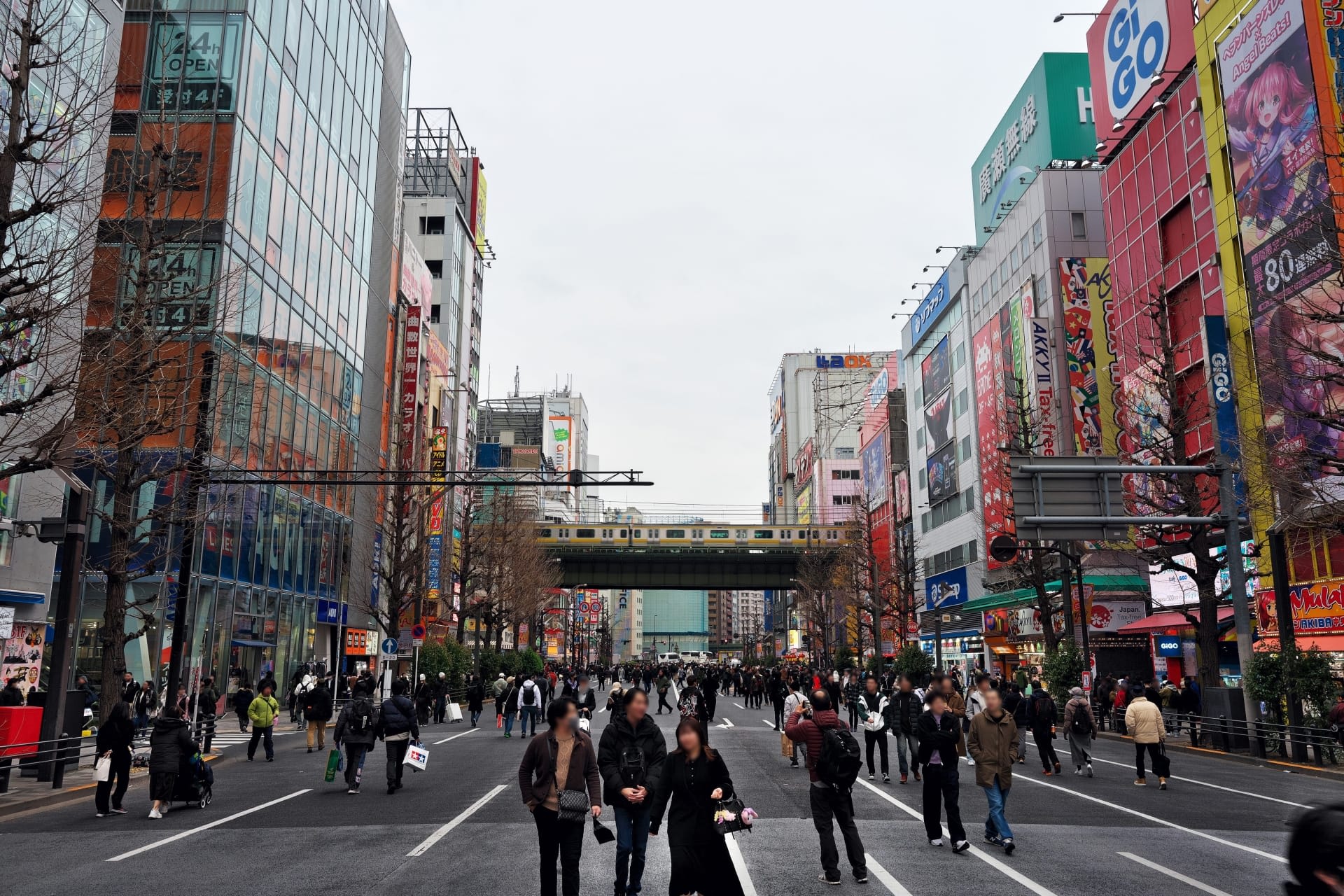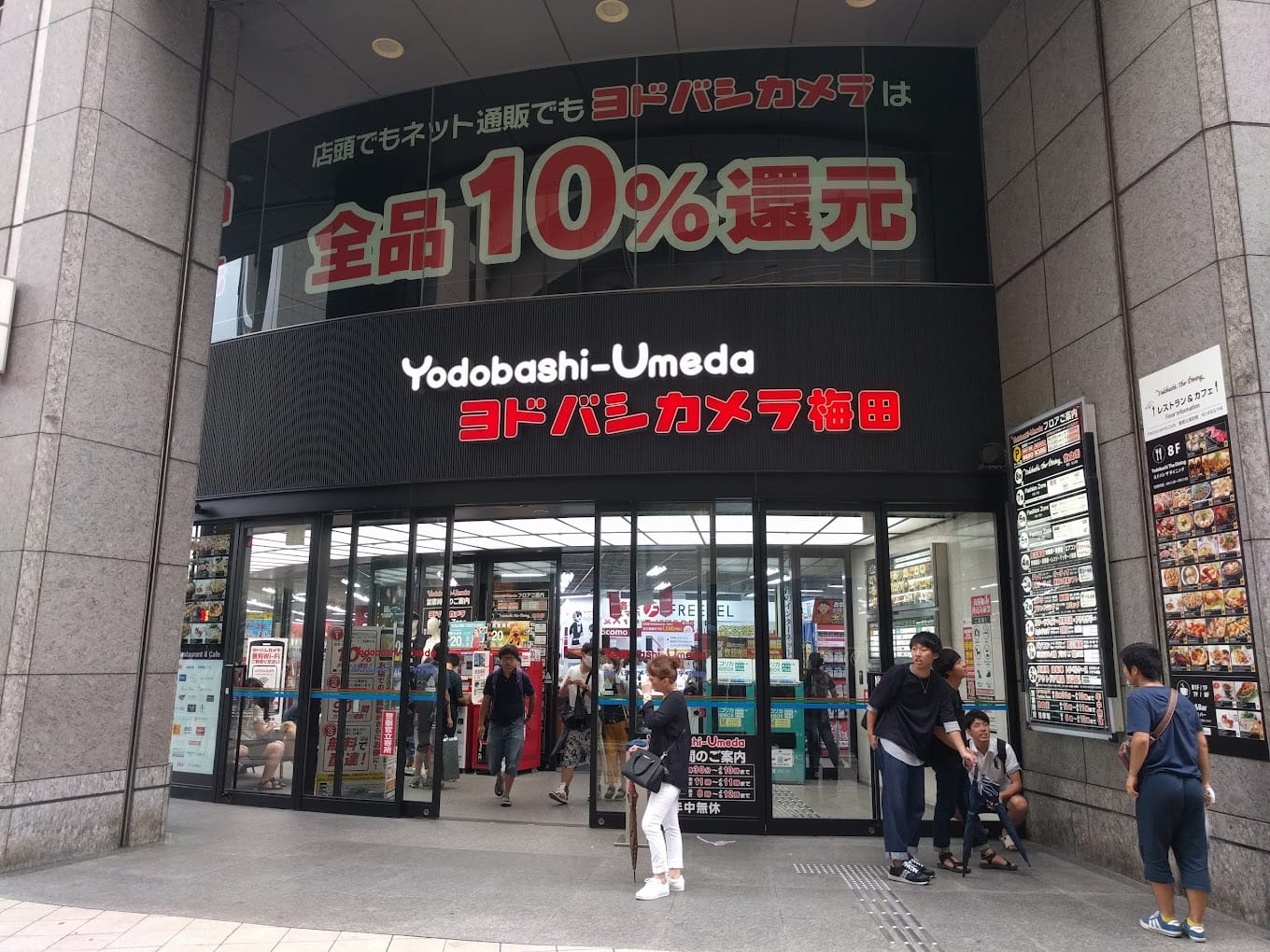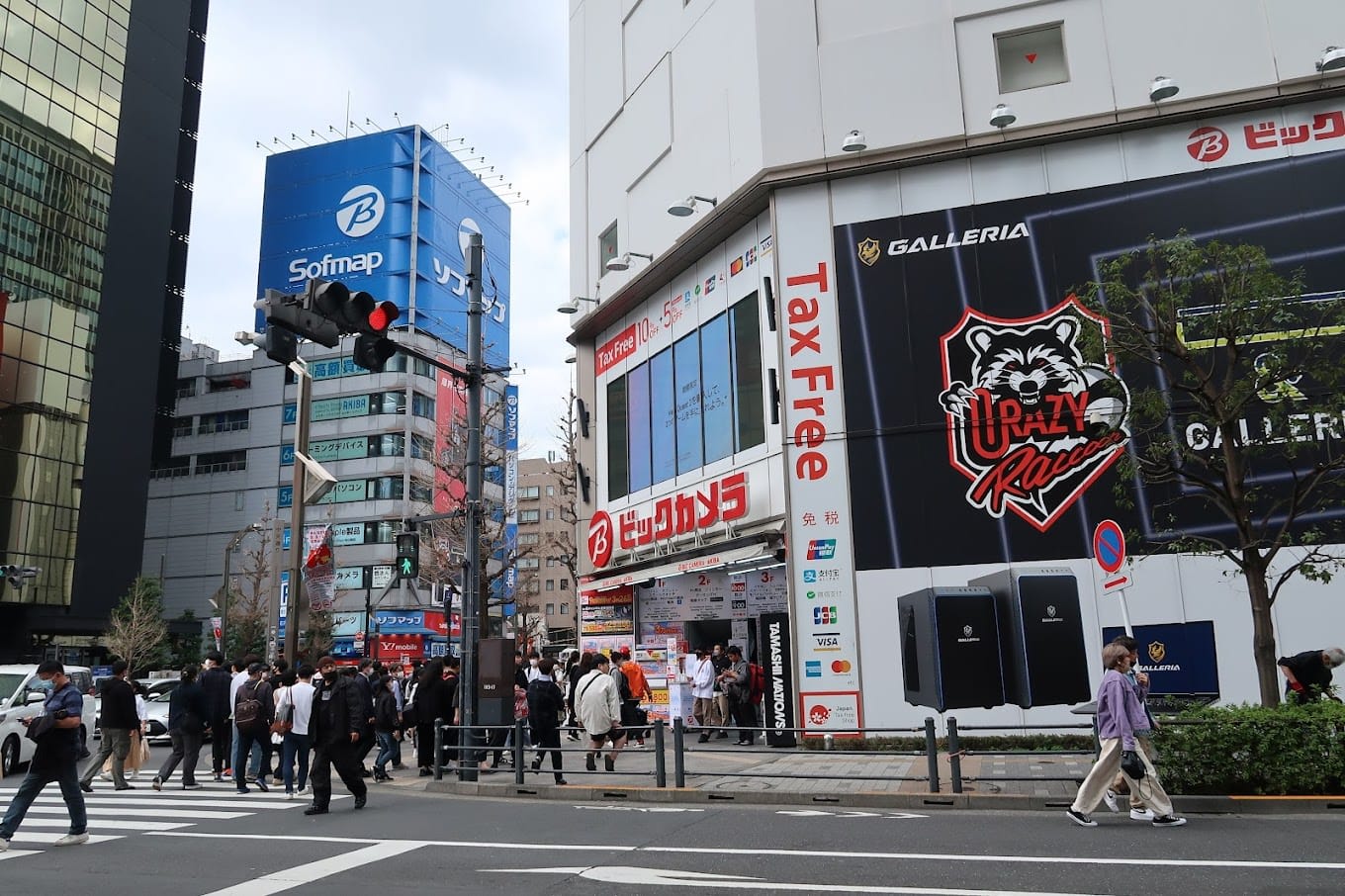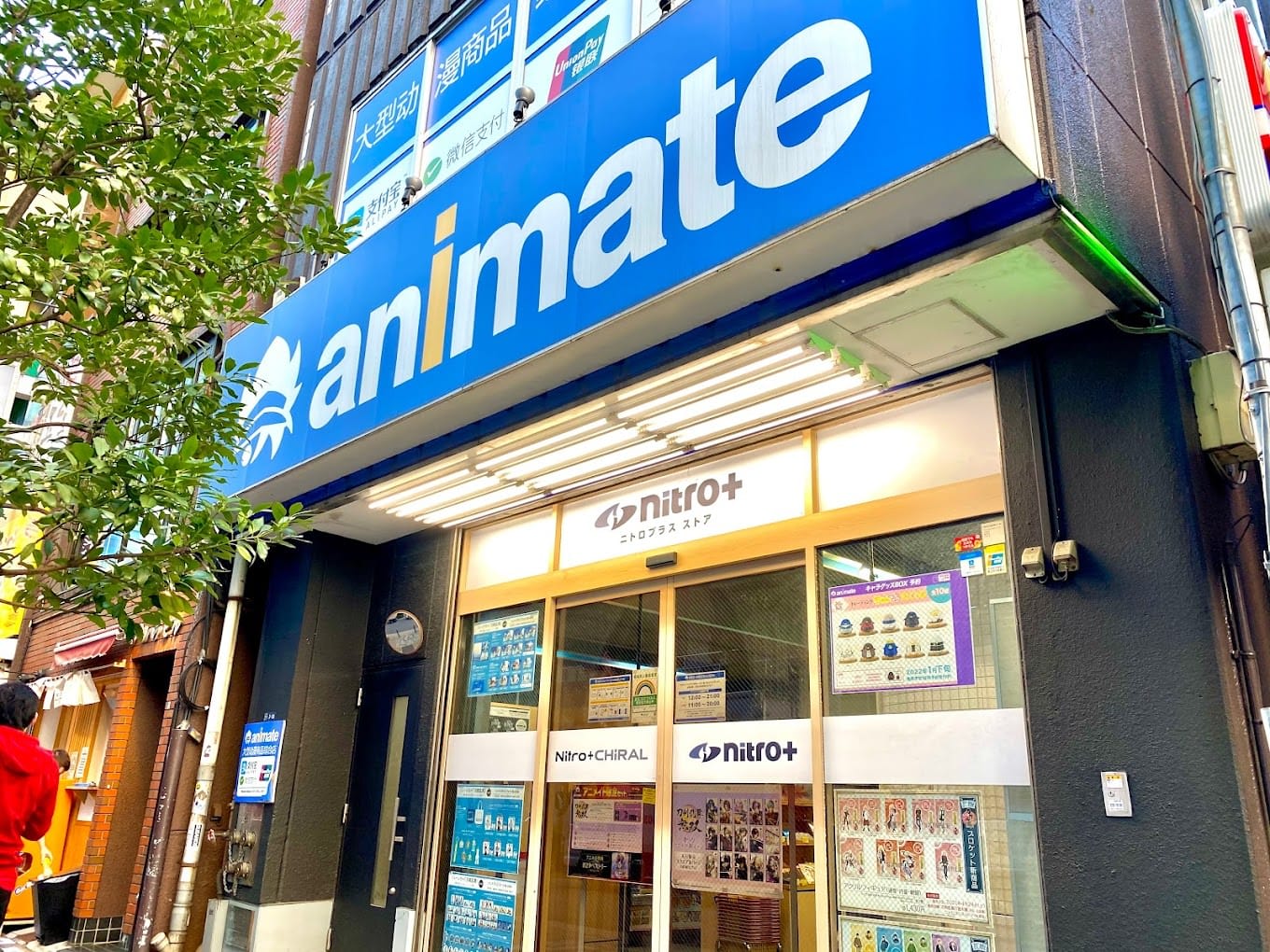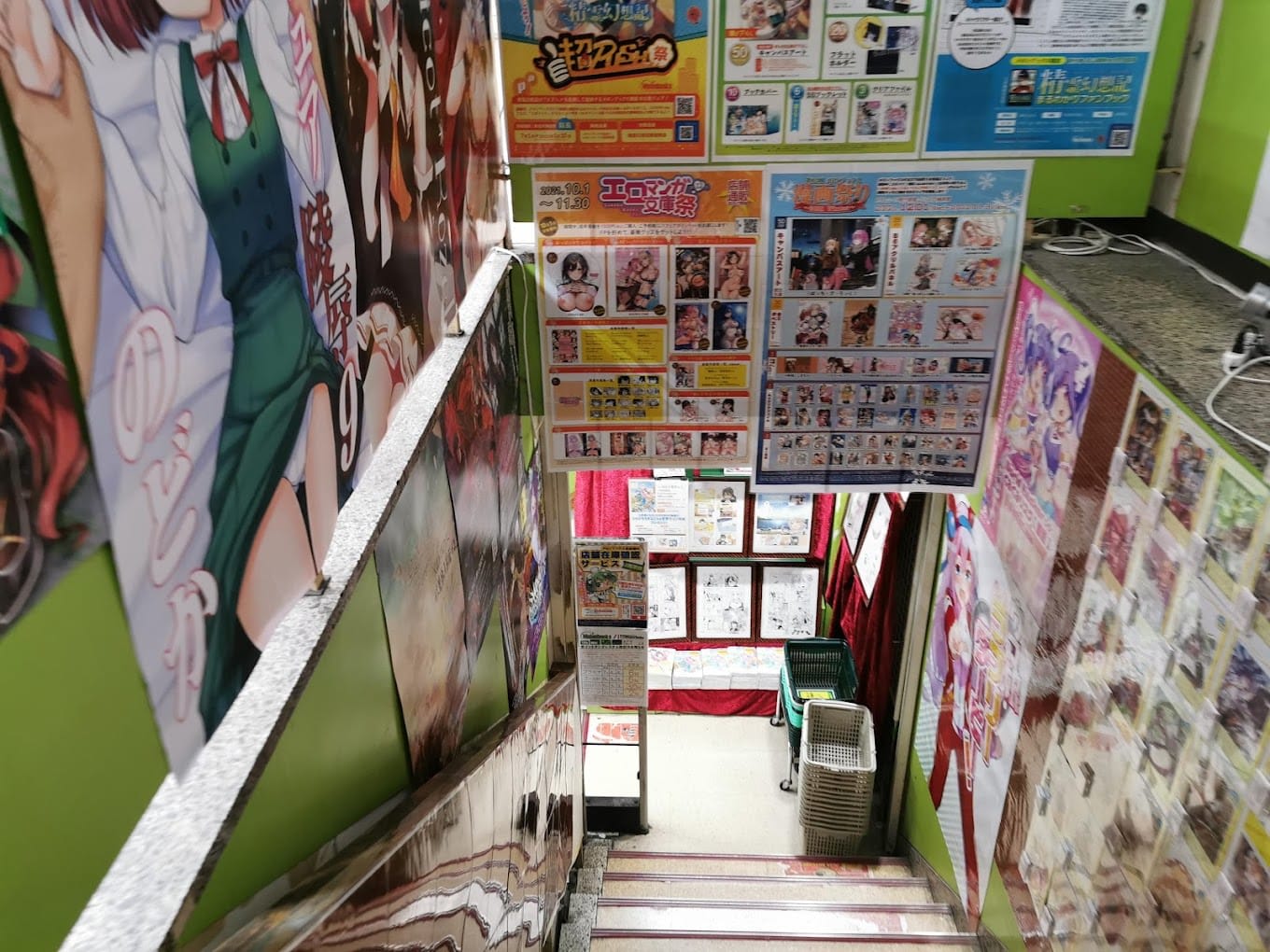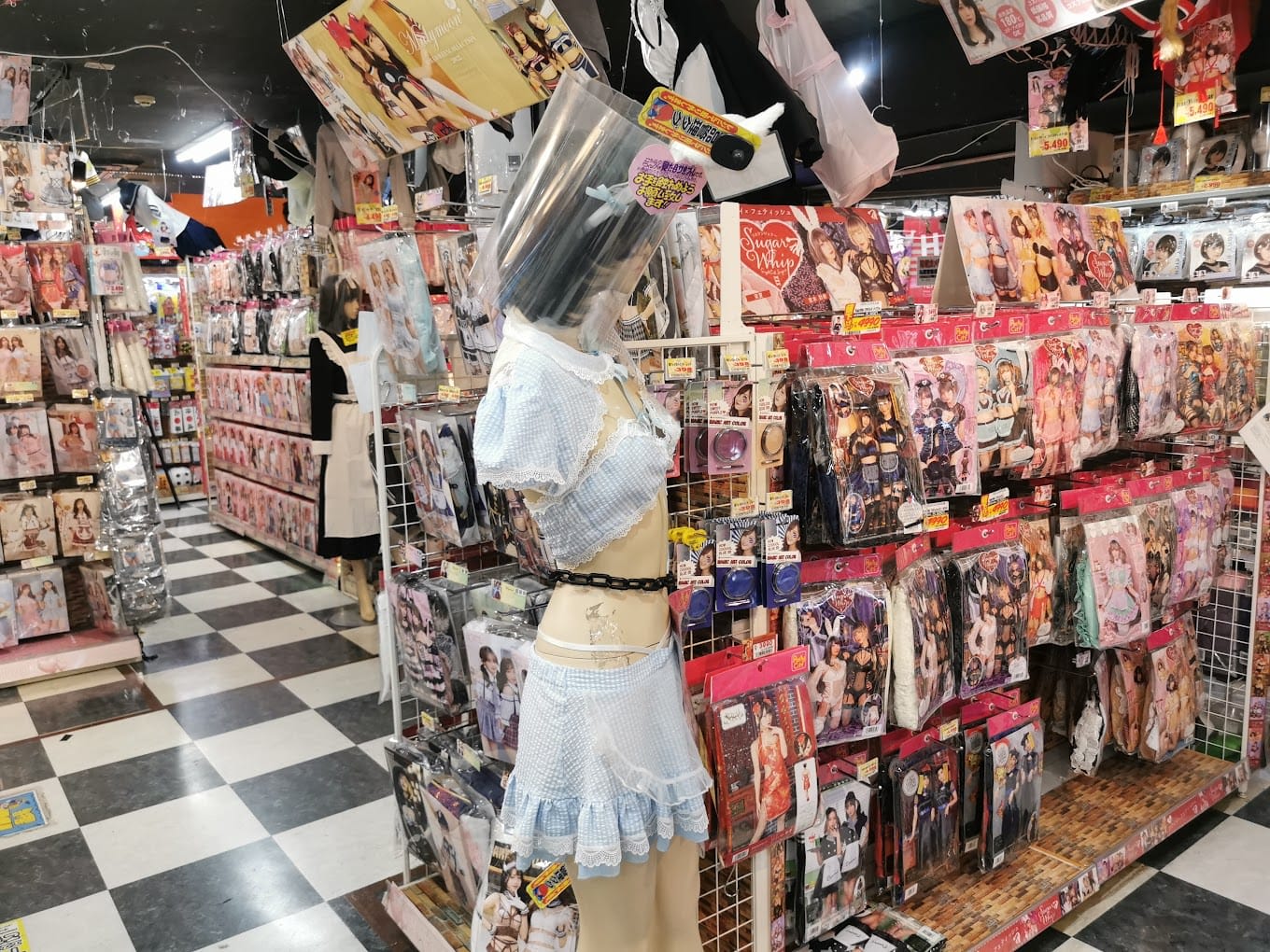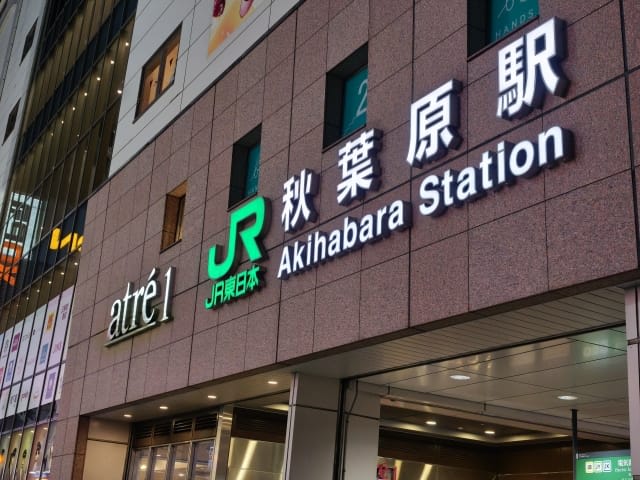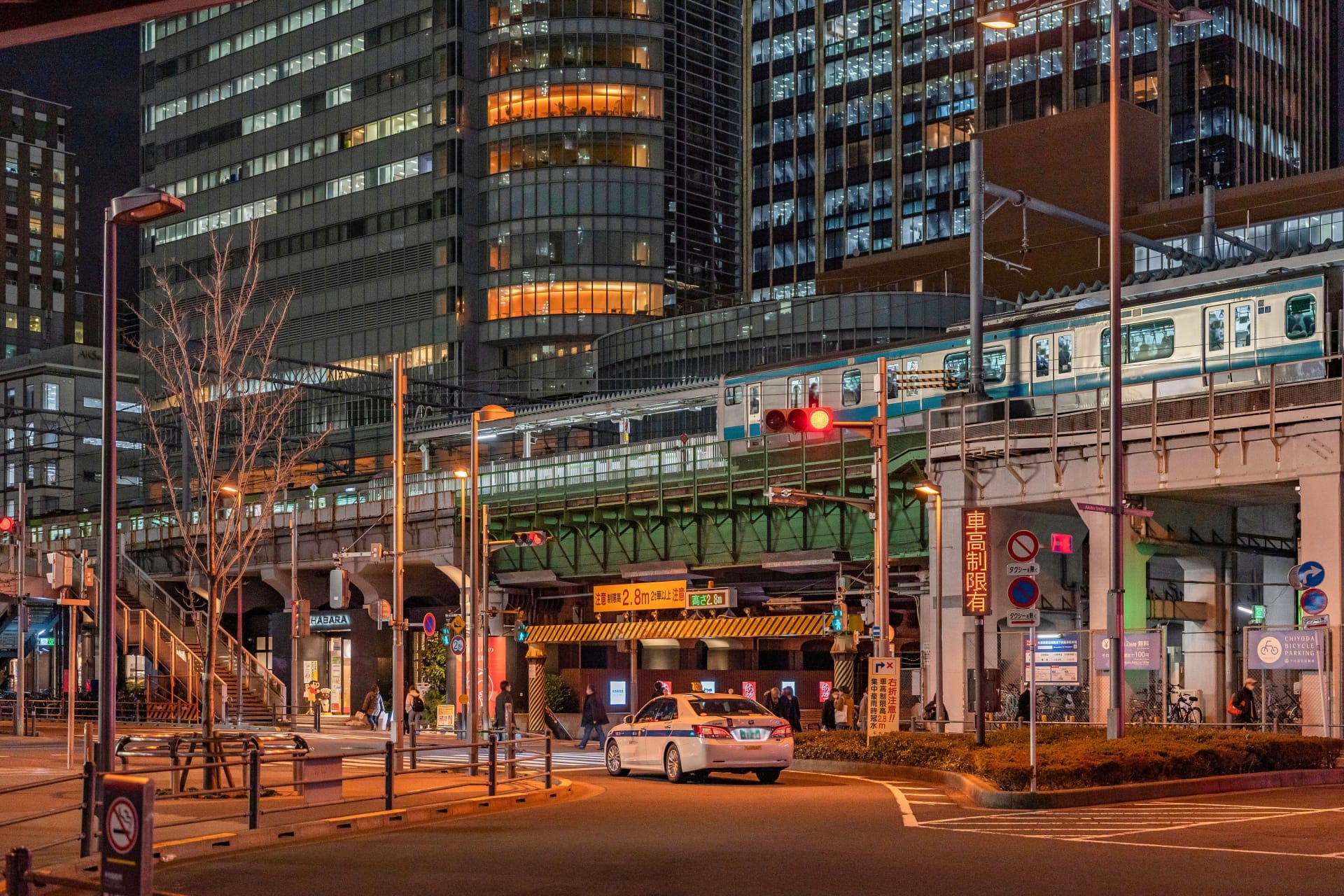Complete Guide to Akihabara Shopping 2025: Ultimate Tourist Shopping Guide
Akihabara is a major tourist attraction in Tokyo that fascinates tech and anime fans from around the world. It's an area with a unique charm where Japanese pop culture and cutting-edge technology merge, offering everything from the latest gadgets to rare figures and retro games.
Admittedly, first-time visitors might find the cluttered cityscape and complex back alleys a bit intimidating. There are also challenges like weekend crowds and limited English support in some stores.
However, I've prepared a guide to help you enjoy Akihabara 120%. I'll introduce carefully selected recommended spots by category, from electronics stores to maid cafes.
In particular, the "Akihabara Anime & Gaming Adventure Tour" with an English-speaking guide is a popular tour that allows you to easily enjoy places that might be difficult to enter alone, such as retro game shops and maid cafes. You can experience all the charms of Akihabara.
As a game enthusiast who has frequented Akihabara many times, I'm delighted to share the multifaceted appeal of Akihabara with foreign tourists. Now, let's set off on an exploration of Akihabara with specific shop information!
Table of Contents
・Characteristics of Akihabara Shopping
・Recommended Electronics and Gadget Shops in Akihabara
・Where to Buy Anime, Figures, and Doujinshi in Akihabara
・Where to Find Souvenirs and Capsule Toys in Akihabara
・Recommended Tours to Fully Enjoy Akihabara with a Local Guide
・Frequently Asked Questions About Shopping in Akihabara
Characteristics of Akihabara Shopping

Akihabara is known as a shopping district with four main areas and characteristics. First, around the Akihabara Station Electric Town exit, large electronics stores like Yodobashi Camera and Bic Camera are concentrated. These stores offer a wide range of products from the latest digital devices to everyday home appliances.
Around Chuo Street and the back alleys, specialty stores selling anime goods, figures, and doujinshi line up. From large stores like Animate and Kotobukiya to small-scale stores for enthusiasts, there's a space where you can fully enjoy Japanese pop culture.
If you're looking for PC parts and gadgets, I recommend specialty stores like Tsukumo and Dospara. I often use these stores when looking for custom PC parts, and they handle not only the latest parts but also many rare products for enthusiasts.
Lastly, don't miss the stores that handle capsule toys and souvenirs, such as the Akihabara Gachapon Kaikan. In my experience, these stores are especially popular with foreign tourists and are ideal for getting typical Japanese souvenirs.
Recommended Electronics and Gadget Shops in Akihabara
For those who want to experience the latest Japanese technology, I especially recommend the following stores. These stores are known for their wide selection and excellent service for foreign tourists.
Yodobashi Camera Multimedia Akiba
Source: GoogleMap
This is a 9-story large electronics store located in front of Akihabara Station, which I frequently use. The product categories are clearly divided by floor, starting from the first floor with smartphones, cameras, audio equipment, PCs, etc., making it easy for first-time visitors to find what they're looking for.
What's particularly noteworthy is the thoroughness of tax-free support, with multilingual staff stationed on each floor, allowing you to shop with peace of mind.
There's also a spacious restaurant floor where you can take a break between shopping. The selection of Apple products, game consoles, and smartphone accessories is also abundant, and you can find Japan-exclusive models as well.
<Store Information>
Address: 1-1 Kanda Hanaokacho, Chiyoda City, Tokyo 101-0028
Closed: None
Phone: 0352091010
Hours: 9:30 AM–10 PM
Website: https://www.yodobashi.com/ec/store/0018/
Bic Camera AKIBA
Source: GoogleMap
This store is particularly well-stocked with gaming PCs, cameras, and audio equipment. I'm especially interested in their selection of used PCs and game consoles, where you can find products in good condition at reasonable prices. The store has tax-free counters on each floor, and major credit cards are accepted.
During regularly held sales, there are opportunities to purchase the latest models at good prices. Many staff members can speak English, and they respond kindly to inquiries from foreign tourists.
<Store Information>
Address: 4 Chome-1-1 Sotokanda, Chiyoda City, Tokyo 101-0021
Closed: None
Phone: 0362608111
Hours: 10 AM–10 PM
Website: https://www.biccamera.com/bc/i/shop/shoplist/shop121.jsp
Tsukumo PC Main Store
Source: GoogleMap
This is one of the stores I visit most frequently when looking for custom PC parts. They have a rich selection of parts for custom PC users, such as CPUs, motherboards, and graphics cards. Their selection of high-end gaming parts is particularly unrivaled in Akihabara, and they also handle the latest water cooling parts.
The staff's knowledge is extensive, which is a big attraction as you can consult about part compatibility and combinations. They also handle many unique gadgets incorporating the latest Japanese technology.
<Store Information>
Address: 1 Chome-9-7 Sotokanda, Chiyoda City, Tokyo 101-0021
Closed: None
Phone: 0332535599
Hours: 10 AM–8 PM
Website: https://tenpo.tsukumo.co.jp/stores/view/honten
If you want to thoroughly enjoy Akihabara's pop culture, having a local guide show you around is also recommended! Experience shopping in Akihabara, known as "Electric Town," with a guide who knows Akihabara inside and out.
・Akihabara Anime & Gaming Adventure Tour
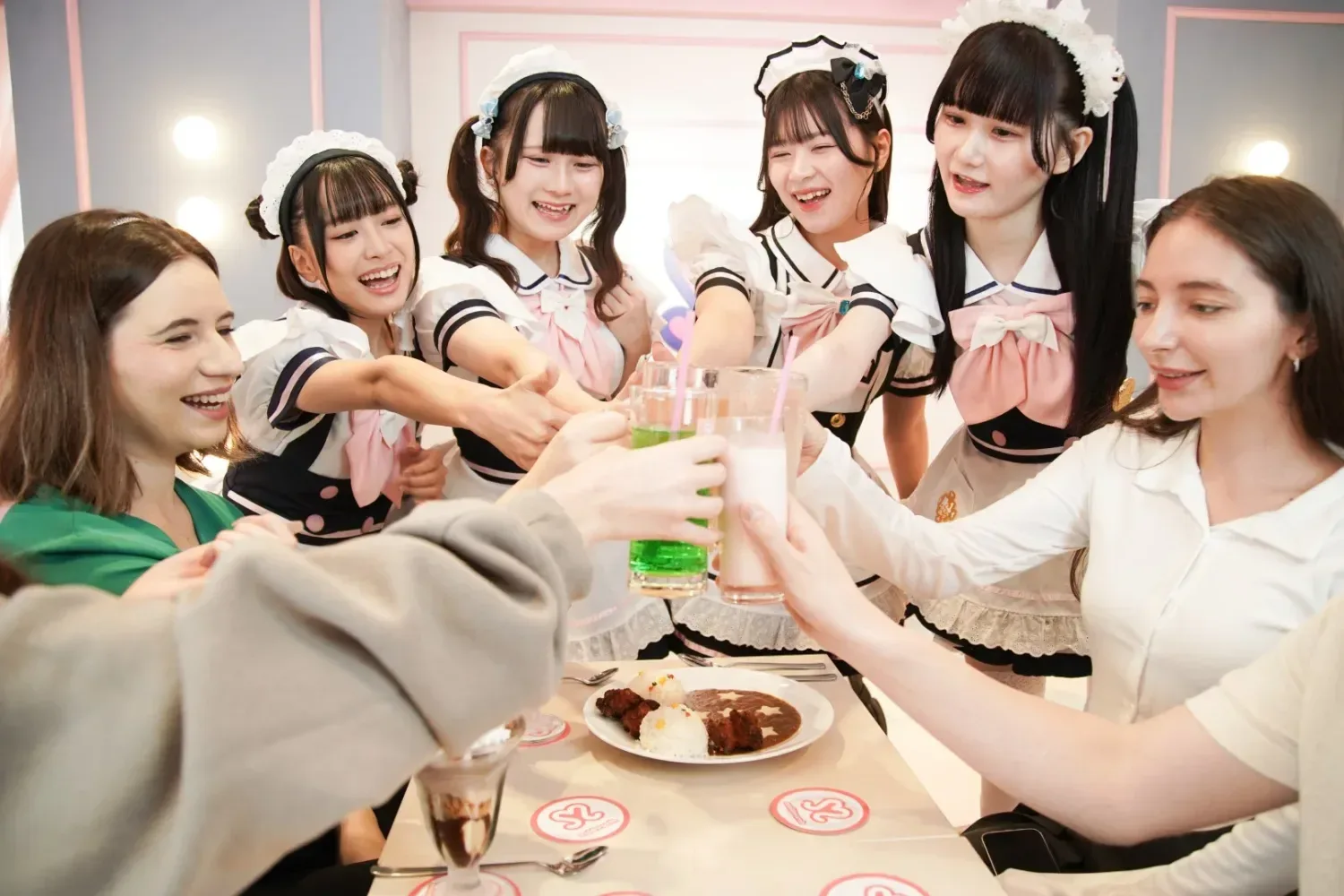
Where to Buy Anime, Figures, and Doujinshi in Akihabara!
Known as the holy land of anime and figures, Akihabara has many specialty stores handling goods from popular domestic and international works. Below, I'll introduce stores that I particularly recommend, known for both their selection and quality.
Animate Akihabara Main Store
Source: GoogleMap
Known as Akihabara's largest anime specialty store, Animate's main store handles all genres of anime-related products, including anime goods, manga, and doujinshi. What I particularly like is the store structure where genres are clearly divided by floor. For example, the first floor has corners for the latest goods and popular works, while the upper floors handle specialized doujinshi and limited products, allowing for efficient shopping.
It's also known for frequently hosting autograph sessions with popular voice actors and exhibition events for anime works.
<Store Information>
Address: 4 Chome-3-1 Sotokanda, Chiyoda City, Tokyo 101-0021
Closed: None
Phone: 0352093330
Hours: 11 AM–9 PM
Hours (Saturdays & Sundays): 10 AM–8 PM
Website: https://www.animate.co.jp/shop/akihabara/
Kotobukiya Akihabara Store
Source: GoogleMap
Known as a figure specialty store, Kotobukiya is a manufacturer-owned store renowned for its high quality. What I find particularly attractive is the display and sale of original figures. The anime and game character figures are meticulously crafted down to the details, and are highly rated by collectors.
The store sells many limited edition and bonus figures, with plenty of products that can only be obtained in Japan. The corners for Gunpla (Gundam plastic models) and special effects work-related goods are also well-stocked.
<Store Information>
Address: Okajima, 1 Chome-8-8 Sotokanda, Chiyoda City, Tokyo 101-0021
Closed: None
Phone: 0352986300
Hours: 12–8 PM
Hours (Saturdays, Sundays): 11 AM–8 PM
Website: http://en.kotobukiya.co.jp/kotobukiya-akihabara-store-floor-guide/
Melonbooks Akihabara 1st Store
Source: GoogleMap
This is one of the stores I frequently visit as a specialty store for doujinshi and light novels. Especially after Comiket (Japan's largest doujinshi fair), many new publications are stocked, and the store is filled with excitement. They also handle a wide range of books with anime-related bonuses, making it a valuable spot where you can tangibly feel Japan's anime and manga culture.
The store is organized by genre, making it easy to find the works you're looking for.
<Store Information>
Address: Hirose Headquarters Building B1, 1-10-5 Sotokanda, Chiyoda City, Tokyo 101-0021
Closed: None
Phone: 0352957060
Hours: 10 AM–9 PM
Website: https://www.melonbooks.co.jp/shop/shop.php?wp_id=4
Where to Find Souvenirs and Capsule Toys in Akihabara
Choosing souvenirs and collecting capsule toys is one of the joys of Akihabara shopping. Here, I'll introduce popular spots where you can get typical Japanese mementos and limited items.
Akihabara Gachapon Hall
Source: GoogleMap
Known as Japan's largest capsule toy specialty store, the Akihabara Gachapon Hall is truly the holy land of gachapon, where I visit every time new products are released. With over 1,000 types of gachapon machines crammed together, you can enjoy various items from anime and game character figures to unique daily necessities for about 300 to 500 yen per try.
Particularly popular are limited-edition figures that can only be obtained here and rare capsule toys. New products are regularly rotated, so there are many repeat visitors, and I myself enjoy new discoveries every time.
<Store Information>
Address: 1F, MN Building, 3-15-5 Sotokanda, Chiyoda City, Tokyo 101-0021
Closed: None
Phone: 0352096020
Hours: 11 AM–8 PM
Hours (Sundays): 11 AM–7 PM
Website: http://www.akibagacha.com/
Don Quijote Akihabara Store
Source: GoogleMap
Don Quijote, open 24 hours, is a standard spot for souvenir shopping where I often guide my friends from overseas. All kinds of products from anime goods to Japanese snacks and cosmetics are crammed together. The corner for unique Japanese souvenirs is especially popular among foreign tourists.
The cosplay goods corner is also well-stocked, where you can purchase costumes and accessories at reasonable prices. Since it's open until late at night, you can enjoy shopping leisurely even after a busy day of sightseeing. The in-store guidance is displayed in multiple languages, and tax-free support is also thorough.
<Store Information>
Address: 1F, MN Building, 3-15-5 Sotokanda, Chiyoda City, Tokyo 101-0021
Closed: None
Phone: 0570024511
Hours: Open 24 hours
Website: https://www.donki.com/store/shop_detail.php?shop_id=98
Recommended Tours to Fully Enjoy Akihabara with a Local Guide
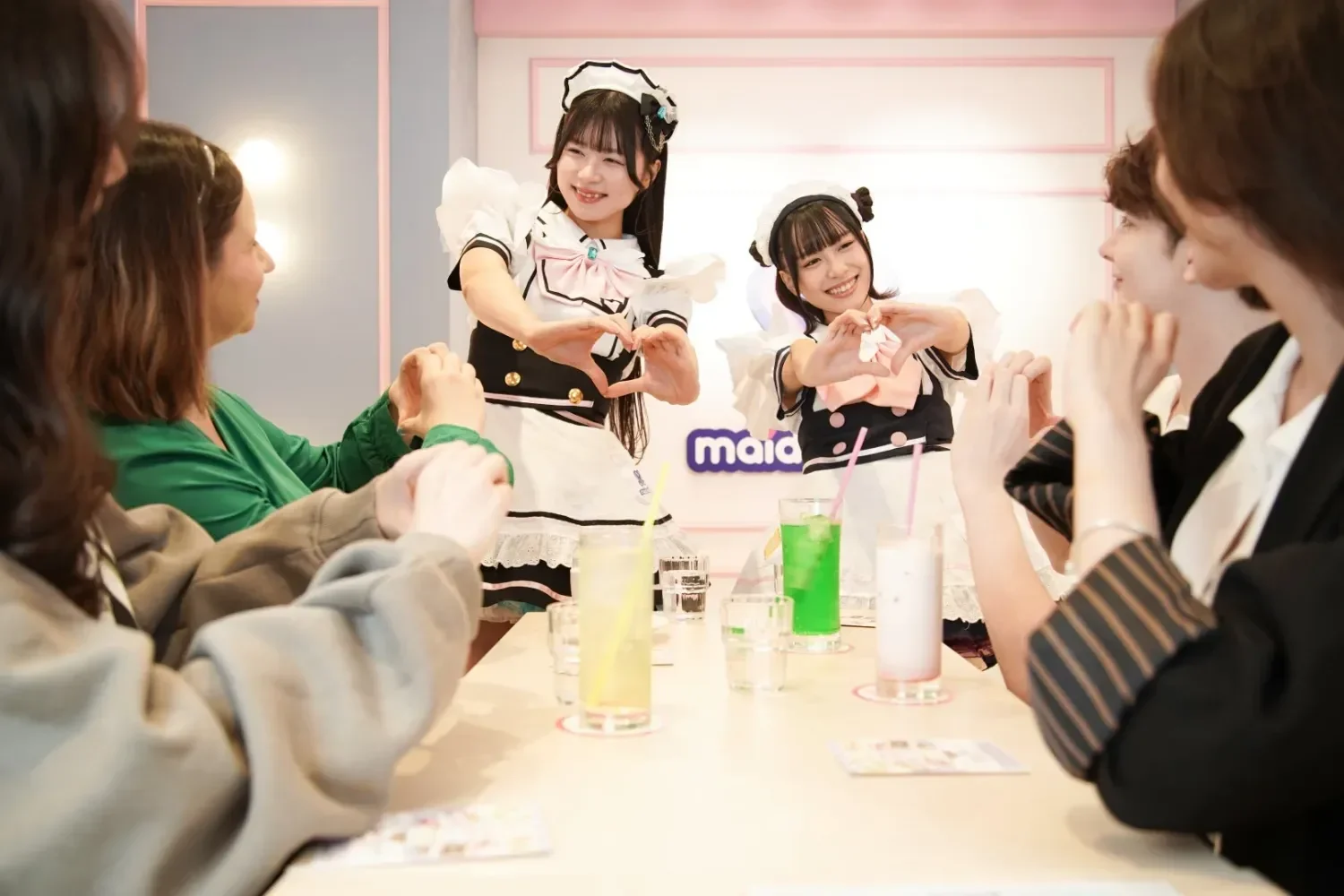
What I particularly recommend is our MagicalTrip's Akihabara Anime & Gaming Adventure Tour. This tour allows you to efficiently visit attractive spots in Akihabara in 3 hours, and the price is reasonable at $82.44. With an English-speaking guide accompanying you, you can enjoy Akihabara's subculture without worrying about language barriers.
At retro game shops, you can see classic game consoles and software while surrounded by nostalgic 8-bit music. Also, at popular maid cafes, seats are reserved, and you can enjoy photo sessions with maids and live performances. One drink is included in the fee, and vegan menus are also available.
With a local guide, you can easily enjoy places that might be difficult to enter alone, such as figure shops, cosplay goods stores, and game centers. This tour is recommended for a wide range of people, from anime and game enthusiasts to beginners interested in Akihabara culture, solo travelers, couples, and families.
Also, cancellation is free up to 24 hours in advance, and date changes are possible. It's also characteristic that reservations are accepted up to 15 months in advance, making it easy to plan your trip.
For details: Akihabara Anime & Gaming Adventure Tour
Frequently Asked Questions About Shopping in Akihabara
To help you enjoy shopping in Akihabara more comfortably, I've compiled frequently asked questions and their answers.
Which stores in Akihabara offer tax-free shopping?
Large stores like Yodobashi Camera, Bic Camera, and Don Quijote have thorough tax-free support. If you bring your passport and the purchase amount is over a certain amount (usually 5,000 yen), you can go through the tax-free procedure. In my experience, large stores also have English-speaking staff on standby, making the procedure smooth.
Can I use credit cards or electronic payments?
Major credit cards like VISA and MasterCard, as well as electronic payments like Alipay and WeChat Pay, can be used at major electronics stores, main anime shops, and Don Quijote. However, some small-scale stores may only accept cash, so I recommend carrying some cash with you.
What's the recommended time for shopping in Akihabara?
From my experience, weekday mornings are the best time to look around leisurely. On holidays and afternoons, it gets crowded, and popular items may sell out quickly. So, if you have specific items in mind, I recommend visiting right after opening.
Any tips for finding specific anime goods in Akihabara?
I recommend starting your search at large stores like Animate or Melonbooks. If you can't find what you're looking for, check the surrounding specialty stores. Limited edition goods often sell out on release day, so it's important to check release dates in advance. I've missed out on popular items a few times myself, so I recommend reserving items you're interested in.
Akihabara is an area with a unique charm unparalleled in the world, where the latest technology and pop culture merge. With various stores gathered from electronics stores to anime shops, figure specialty stores, and the holy land of gachapon, you can enjoy exploring all day.
Especially if you use the "Akihabara Anime & Gaming Adventure Tour", you can fully enjoy the charms of Akihabara without feeling any language barriers. Also, tax-free support is thorough at each store, creating an environment where tourists from overseas can enjoy shopping with peace of mind.
I've been frequenting Akihabara for about ten years, but there are new discoveries every time, and its charm is endless. I hope you'll use this guide to find your own way to enjoy Akihabara.
